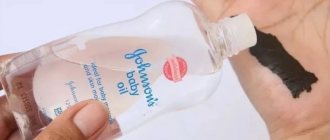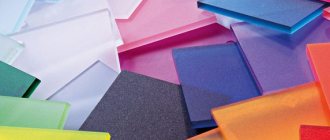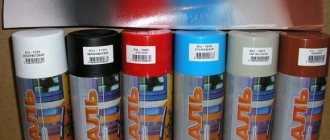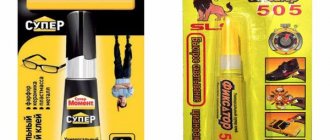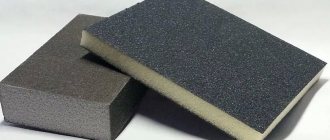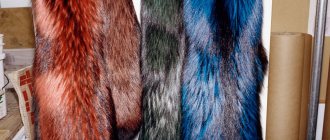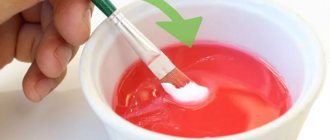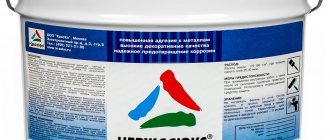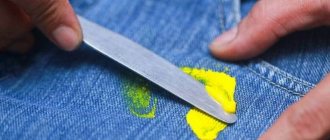What is epoxy resin
It has the appearance of a transparent liquid, which contains a resin and a hardener. Once these two components are mixed, the composition gradually hardens into a clear-looking plastic.
Epoxy resin cannot be classified as an environmentally friendly product, but modern technologies make it possible to minimize the risk of its negative impact on human health. For this purpose, the maximum cleaning method is used. Despite the almost complete absence of odor, compared to construction analogues, jewelry epoxy resin still has negative properties.
Epoxy resin tables
Precautions must be observed in any case when working with this substance. The construction of crafts should take place in a well-ventilated area. Don't forget to wear gloves and try to prevent this substance from coming into contact with the cornea of your eyes. This can lead to serious negative consequences.
Popular makes and models
Let us note once again that the market for accessories for working with epoxy resin is rapidly expanding with new players. Such an increase in production became possible thanks to the development of advanced technologies. Compact factories for the production of resins and dyes have recently begun to appear like mushrooms after rain. It is not surprising that some brands have not yet gained traction. However, we will try to give some of the most striking examples.
Poly Max Dream
The dyes, known under the Poly Max Dream brand, are sold as a kit consisting of five components:
- white;
- blue;
- green;
- red (fluorescent);
- pink.
The price of one set is 1000 rubles. The weight of each component is 15 g. The manufacturer also offers individual colors in 50 g containers, as well as set No. 2, in which white and pink are replaced by purple and orange. The products are mainly used to imitate ruby and emerald stones. The color is environmentally friendly and does not harm human health.
MG Epox Color M
The liquid dye is sold in bottles of 10 g. The cost of one bottle is 125 rubles. The manufacturer produces colors in white, yellow, green, brown, red, orange, purple, blue and black. There are also pearlescent shades: red, bronze, copper, gold, pearls. The metallic pigment is available in only one shade – silver. All dyes are compatible with each other and can be mixed. The recommended percentage of the dye volume is 1-2% percent of the epoxy resin volume.
Crystal
Under this brand you can find a huge variety of accessories for drawing and applied arts. The paints in question are presented by the store and the company of the same name, Hobby magic. You can order the color only through the online store. The buyer can choose from a range of transparent and pearlescent paints. Each color has its own code. The collection consists of 50 different shades. The material is packaged in 10 and 30 grams. The cost of a ten-gram portion is 115 rubles. For 30 g of paint you will have to pay 295 rubles.
Good to know > Which epoxy resin should be used for boat repairs
Polymer-O (Palizh)
Paste colors are highly concentrated. The cost of a package weighing 50 grams is 500 rubles. In addition to conventional dyes, pastes contain a phosphor and a fluorescent substance. The manufacturer also offers pigmented pearlescent pastes of various shades. For filling large areas, the color is sold in 1.6 kg tins.
Epoxicon
Epoxicon dyes differ from their analogues in that they are diluted with a high concentration in the main component of epoxy resin. Stamps with pearlescent pigment contain natural mica filling. The material is resistant to ultraviolet radiation and high temperatures. You can work with the dye without protective equipment, as it is absolutely safe. 10 grams of dye costs 120 rubles.
ArtLine
A well-known brand that has gained popularity thanks to the production and sale of epoxy resins is represented by a dye of the same name. ArtLine dyes are a homogeneous liquid that mixes well with epoxy resin. The material is packaged in glass flasks of 5 ml. The price of one flask is 160 rubles. Available in red, green, yellow, purple and blue.
EpoximaxX
EpoximaxX is another well-known manufacturer of jewelry resins and accessories. EpoximaxX dyes are highly concentrated. The maximum permissible share of filler is 5%. The paste is harmless and odorless. At the same time, it mixes well with the resin components, forming a homogeneous mass. The pastes form a transparent and matte composition. Both types of dye are available in different shades.
Reactint
These dyes can be called innovative. They are designed not only for epoxy resins, but also for painting plastic or polyurethane. The filler is in a liquid state, but it is highly concentrated. The maximum color content should not exceed 0.1% by weight of the epoxy, otherwise there is a high probability that the paint will influence the polymerization process. For 15 grams of Reactint paint you will have to pay 350 rubles.
MICA Rainbow UV
You cannot ignore goods from China. On the Aliexpress website you can order pigment powder for epoxy resin of almost any shade. It is made of natural mica and does not in any way affect the process of polymer formation. The cost of such powders does not exceed 50 rubles per package.
Special dyes for epoxy resin
Epoxy resin has found its use in the construction industry, repair work, and in various industries. It is an integral part of adhesives and self-leveling floors. Recently, it has been used to create all kinds of jewelry: beads, keychains, bracelets, pendants, brooches and many other beautiful things. But to make the final result unique, the epoxy resin is tinted in different colors.
Multi-colored drops of epoxy resin
For these purposes, you can purchase a pigment concentrate or a special color in specialized stores. They are designed to color the resin in the desired color. In order not to spoil the result, it is best to use specialized paints specifically designed for these purposes. They are divided into the following types:
| Single color | Retail outlets sell such paints in a variety of shades: from white to black. |
| Fluorescent | The presence of a phosphor makes it possible to glow in the dark. They are colorless and colored. |
| Matte tint | The presence of a certain component makes the epoxy matte, which makes it possible to make amazing products and jewelry that exude nobility. |
| Metallic or pearlescent | Features unique iridescent motifs. |
| With glitter | Crafts using this resin sparkle beautifully. |
Helpful information! The type of finished product directly depends on the amount of paint added to the epoxy resin. If you add one drop of dye, the resin will have a translucent tint. For a darker color, you need to enter a larger amount of color. To give the color depth and richness, you first need to make the epoxy resin white, and only then use the desired color.
Dyes for epoxy resin
The rules for choosing paint are quite simple. It is advisable that the epoxy resin and the color you choose be from the same manufacturer. The packaging of such dyes is very compact. Packaging is carried out in 5 - 10 grams. And the cost is quite reasonable. Paint consumption is minimal. Moreover, to create an interesting shade of paint, you can mix it.
The main colors offered by the manufacturer are as follows:
- red;
- white;
- black;
- green;
- orange;
- purple;
- golden;
- blue;
- brown.
Special formulations
To tint resin you can use a variety of methods. There are practically no restrictions here. An important requirement for the coloring composition is its complete absence of reaction with epoxy, as well as color stability when mixed with the base material. Resin allows you to add paints in the form of powders or emulsions.
It is necessary to understand that the water-based pigment practically does not mix with the resin components. Nevertheless, masters have also found worthy use for “handicraft” dyes in their creativity.
If you need to get a homogeneous substance, evenly colored, it is advisable to buy special dyes for epoxy. They are designed for such purposes and do not have any effect on the physical and technical characteristics of the material, while remaining quite stable over time and giving an excellent visual result.
Epoxy resin dye is sold in paste form. In terms of consistency, it is a viscous mass that has the appropriate color. It is noteworthy that after mixing with resin, the color shade does not noticeably change. Some manufacturers supply a pigment substance that is known to be dissolved in the main resin composition (in component “A”). This guarantees compatibility with all types of resins, but makes certain adjustments to the preparation of the composition. It is recommended to first add dye to the resin, measure the final mass, and then add component “B” according to the proportion.
Any dye contains tiny particles of pigment as the main component. When mixed with resin, these particles are evenly distributed throughout the entire volume. The pigment for epoxy resin is a finely dispersed substance. The smaller these particles, the better the quality of the paint you will get in the end. Large and rather “heavy” pigment flakes may precipitate after pouring, and the resin will be unevenly colored. An important feature of dyes is that they can be mixed to obtain new shades.
By dosing the amount of pigment component, you can adjust the transparency of the resin and color saturation. A paint concentration of 0.5% of the resin volume (in simple terms, for a disposable cup, this is a drop of paste on the tip of a toothpick) produces a transparent polymer with a subtle color tint. The average concentration of the paste is 5-6% percent. It is impossible to calculate the amount of additive, so it is recommended to prepare a test composition to visually assess its transparency and color. But it must be remembered that perception strongly depends on the thickness of the poured layer.
Surely more than once in the article it will be stated that the dye in all cases without exception is added to the main composition before mixing with the hardener. The only caveat is the adjustment of the paintings. Professional artists use special resins with a high life expectancy to edit epoxy paintings. They add the dye after the fact so that they can immediately clearly see the result. However, such mixtures are used as a corrector, but not as a base filling material.
Useful to know > Which epoxy resin is perfect for creativity, features of choice
Theoretically, it is believed that the coloring component does not change the properties of the resin, but craftsmen recommend tinting the material before using it directly. You should first make sure that the presence of the color will not change the hardening time of the resin. There are detailed instructions for this.
How to tint epoxy resin at home
In addition to special tools, you can also use improvised ones, and the most extraordinary ones. If you don’t have the time or desire to run to the store for pigment substances, then you should use what is currently in stock. The main condition: these products should not be water-based.
Most often, craftsmen use the following tinting agents:
- Ink from ballpoint pens. There are some negative aspects: it is not always possible to achieve the desired result. So, using green ink may result in a brown tint.
- Ink from gel pens. This is the best option; the result is very beautiful and bright shades.
- Regular oil paints for artists. They need to be introduced into the resin in small doses, and the hardener should be added last.
- Ink for polymer clay. An excellent coloring agent that gives a long-lasting shade.
- Alkyd paints, nitro paints for cars. They can give epoxy resin an unforgettable shade.
- Activated carbon or printer toner. The result of application is a thick black color.
- Alcohol stains or dry pigment dyes. They give a unique color to resins.
- Baby powder, talc, colored powder. An interesting way to give epoxy resin the desired shade.
- Leads of colored pencils. The variety of colors will give you the opportunity to make any shade you need. The leads are ground into powder and added to the resin.
- Pastel colors. They impart color to the resin, but not transparency.
- Tooth powder, chalk, white clay. The result is perfect white.
- Diamond alcohol solution. Regular green stuff, purchased at a pharmacy kiosk, will make the resin a unique, bright green hue.
- Stained glass paints. An excellent way out of the situation, but only if water was not used in their production.
Useful video on the topic:
Characteristics
The production of coloring and pigmenting agents is a complex technological process. As a result, paints have some technical characteristics. Craftsmen, as a rule, rarely delve into the intricacies of production, however, some parameters should be taken into account when purchasing a particular brand of color.
Useful to know > Contact brand two-component epoxy adhesive and its varieties
The list of characteristics cannot be called universal, since each manufacturer indicates its own list of parameters. You can list what exactly the buyer will find on the packaging or in the instructions.
- Material. Dyes do not have a strictly defined chemical formula. In fact, these can be a variety of substances. The main thing is that they do not react with the main composition of the epoxy resin. For example, there are dyes based on propylene. Pigment powders are made from mica, and some pre-made additives are already made as the "A" component of epoxy resin.
- Type. Everything is very simple here: the paint is presented in the form of a liquid, paste or powder. The buyer must determine for himself which consistency is more convenient for him to work with. The fact is that professional artists “play” with shades. Naturally, this is achieved by dispensing paint. But if, for example, adding powder does not affect the curing process in any way, then when adding a liquid component, the proportion will be disrupted and additional adjustments will be required.
- Color. In principle, the buyer can evaluate the shade visually, but after mixing the dye with the resin, the result may change. Many skeptics argue that the shade will change, but not the color itself. But it is enough to recall a number of cases when black paint was purchased, but in reality it turned out to be dark blue or brown. Modern manufacturers provide a huge selection of colors, and each of them can be combined with a phosphor.
- Weight/Volume/Dimensions. All these parameters indicate the amount of dye in the package. Before going to the store, the buyer must calculate how much material will be needed to implement his plan. Next, he purchases resin, hardener and dye in such quantities as to minimize costs.
- Effect. The manufacturer often indicates additional properties of the color. Examples include whitening, pearlescent, ultraviolet glow, glow in the dark and finally no effect.
How to paint epoxy resin - step by step instructions
Before you begin, you need to acquire the following components:
- gloves;
- syringe;
- dyes;
- epoxy resin;
- silicone mold;
- wooden mixing sticks;
- plastic cup.
Necessary actions:
- We take a syringe and measure the required amount of epoxy resin into a cup. The most convenient is a 5-cc syringe, but you can also use a 2-cc syringe, but you will have to fill it several times, and this is not very convenient.
- Add catalyst in the required proportion.
- Mix the ingredients well until a homogeneous transparent substance is formed.
- Place the container in a water bath to remove air bubbles.
- When there are no more bubbles, you need to take stained glass paint and add a couple or three drops to the glass.
- Mix everything well. It is worth noting that the mixing process will not achieve a dense color. The mass will remain translucent. But you don't need to use a lot of paint. Maximum 5 drops.
- The paint mixes well with epoxy resin, so this procedure does not require much effort or time.
- Instead of For stained glass paint, you can add oil paint to the composition. But its volume should be minimal, literally at the tip of a match. This paint gives a strong color, so do not overdo it. The rich color directly depends on the amount of oil dye.
- The main thing is that the mixing is thorough to avoid clots. In fact, paints mix very well with resin.
- The effect of oil paint is more significant than that of stained glass, but the substance still remains translucent.
- Afterwards, the resin is poured into a mold prepared in advance.
- The mold is placed in a dry place and covered with a kind of dome to prevent dust from entering.
- Epoxy resin hardens within two days.
On the left - resin with stained glass paint, on the right - with oil paint
Recommendations for painting epoxy resin
In order to achieve the desired result, the following rules must be followed:
- so that the epoxy resin ultimately does not resemble rubber, oil paints, alkyd paints and nitro paints must be used in a volume not exceeding 10%;
- the volume of other dyes is even less: from 5 to 7 percent;
- Resins are produced that are not afraid of water, but they are very expensive. As for epoxy resin, it is able to lose its properties even when exposed to a small amount of moisture;
- To achieve the desired result, it is necessary to work with epoxy resin at a room temperature of 22 to 23 degrees. In this case, both coloring and hardening will take place at the proper level.
Available means
Beginning artists often have a question about what dyes can be used as analogues to more expensive options. At the initial stage, you can use available tools that can be found in almost every home.
These include:
- art paints (acrylic and oil);
- nitro paint;
- printer toner;
- crushed colored chalk;
- nail polish;
- food colorings;
- brilliant green, iodine, potassium permanganate.
However, it is necessary to understand that the color quality will be noticeably inferior to professional dyes. Moreover, “home options” are less reliable, which means the result will be more unpredictable.
Each master himself determines the appropriate type of dye for himself. In this case, not only the ease of use is important, but also the type of product that requires painting.
Safety precautions when working with epoxy resin
It cannot be said that human interaction with epoxy resin can lead to poor health or death. It won't come to that, of course.
But there are certain requirements that are better to comply with than to neglect them:
- It is imperative to work with gloves.
- It is advisable to cover your mouth and airways with a respirator.
- If epoxy resin gets on your skin, it should be washed off quickly with soap.
- If resin gets into your eyes, consult a doctor immediately.
- If the resins contain solvents, then the room where you are going to work should be well ventilated.
- Containers in which substances are mixed must be disposable. They cannot be washed and are immediately thrown away as unnecessary.
- To mix, you need to use wooden sticks, which are then also thrown away.
Epoxy resin jewelry
Currently, almost all stores will provide lovers of beauty and originality with many options for jewelry made from epoxy resin jewelry. Such jewelry is extremely popular due to its naturalness, sophistication and romance. Amazing compositions cannot leave anyone indifferent. Representatives of the fairer sex, to emphasize their originality, femininity, and tenderness, prefer to wear just such accessories.
Specialized retail outlets can offer both original works, which can cost incredible amounts of money, and simple products at affordable prices. But you should keep in mind that you can create a masterpiece yourself. There would be a desire and the necessary components. This creative process is usually called hand made.
Dried flowers in epoxy resin
To make the earrings beautiful, you need to purchase high-quality epoxy resin, forget-me-nots, heather, and flowering forest herbs. You will also need to make a hook.
The instructions for making such a decoration are as follows:
- We prepare the epoxy resin strictly according to the instructions, leave it for 2 - 3 hours so that it becomes viscous.
- Take a sheet of paper and draw stencils on it with a pencil or pen. They can be of any geometric shape or irregular.
- Prepare a horizontal surface. It should be perfectly smooth and clean. It is worth covering it with oilcloth.
- We put stencils on oilcloth and cover them with regular paper files. The resin is poured onto the file and distributed over the stencil using a thin stick or toothpick. The resin layer should be 2 - 3 cm. Place a dome on top in the form of a lid.
- The blanks harden for two days. Afterwards, the file is removed, and the product is given the desired shape using a nail file.
- Let's make another batch of epoxy resin. A viscous mass is laid out on the finished base and dried flowers are placed there. All this is covered with a lid and left to dry. To add volume, apply another layer of resin.
- Using a nail file we make the final shape. You can also use sandpaper for these purposes.
- Take a needle and make a hole. We insert earring mounts there. The decoration can be worn.
How to tint epoxy resin at home
DIY repair material resin
